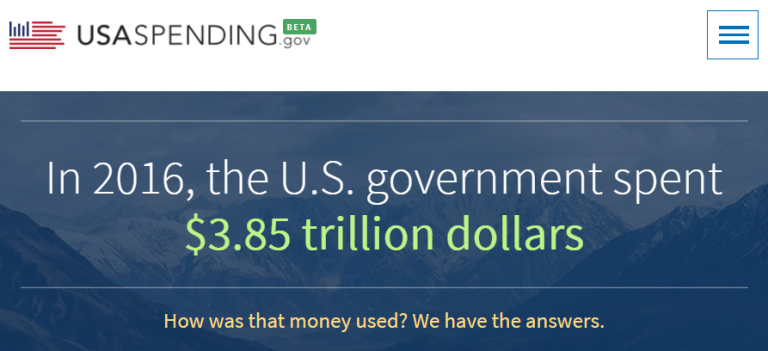The passage of the Digital Accountability and Transparency Act of 2014 (DATA Act) has unlocked a wider array of U.S. government spending data for public consumption. Among the beneficiaries of this data are federal grant applicants and the new beta version of USAspending.gov. (Note: The data is still being migrated, so more historical data is available here.)

How Could This Data Help?
The federal award and spending data on USAspending.gov can be used to gain insight into award trends, spending rates, and organizations that received a grant award. With this and other information, you can look further into agencies’ grant programs you wish to apply for and learn more about organizations that successfully received grants you applied for but did not receive.
The results of your analysis could inform your future grant application strategies. As more data becomes available through the DATA Act reporting, you can utilize the USAspending Application Programming Interface (API) to break down and analyze the data using your own processes.
Here are two examples of how you could use this data.
Example 1: Connections to Local Grant Recipients
Let’s imagine the nonprofit organization you work for has traditionally not applied for any federal grants. You are tasked with looking into federal grants as a potential funding source.
This is a complex consideration. USAspending.gov could be used to search by your zip code to see all the organizations receiving federal funding nearby. With this list, you can see which organizations you already know or serve similar missions. Reach out to your neighboring organizations to see if they would be willing to discuss what it is like to apply for and manage a federal grant.
Of course, this will not make your decision for you, but you can gain insight from those already managing grants. As an aside, if you are actually in this scenario, check out the Grants Learning Center and Grant Writing Basics blog posts to learn more before you jump into a federal grant application.
Example 2: Insights and Improvements
Next, imagine you applied for the Patient-Centered Outcomes Research Clinical Decision Support Learning Network (PCOR CDS-LN) cooperative agreement on Grants.gov in 2015; however, your organization did not receive the award.
On USAspending.gov, use the keyword search and enter the program title. By narrowing the results by the awarding agency and other criteria, you can learn how many organizations received an award and for what amount. This information could spin off additional research about the organizations, program, or more. Paired with feedback on your rejected application, you can work toward improving your next federal grant application.
These are just two basic examples of how the increased data transparency can assist you with federal grant applications. We hope these prompt other ideas for how you could use this data.